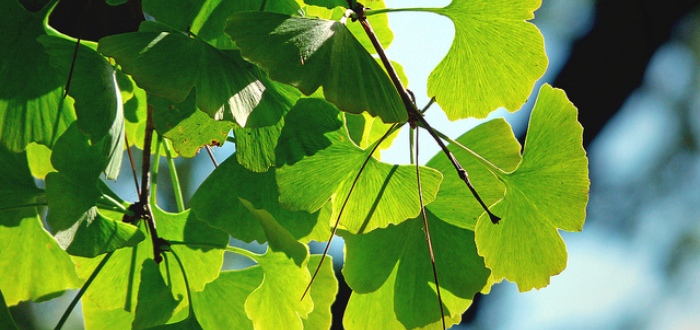History
Today, Ginkgo biloba can be found in almost every continent
across the globe (with the exception of Antarctica.) But it has not
always been this way. The Ginkgo Tree has a very unique history and its
existence today is greatly in debt to the Buddhist monks in China.
The Phylum Ginkgophyta is
believed to have been around since the early Triassic period and some
scientists say even the late Permian times. Ginkgo biloba has
fossils that date back to the early Jurassic period. Charles Darwin
actually termed the tree “the living fossil” because it has been around
for so many millions of years. During the Triassic period, species from
the genus Ginkgo (i.e. Ginkgo yimaensis, Ginkgo adiantoides , Ginkgo
biloba, etc.) were plentiful in Asia, Europe, and North America.
Some of the species died out during the Tertiary time causing the vast
range to shrink in size. By the Pliocene Epoch Ginkgo biloba was the only
species remaining from the phylum Ginkgophyta and it was limited to
present-day China.
 Many botanists believed
the Phylum Ginkgophyta to be extinct. However in the late 1600’s, a
German scientist named Engelbert Kaempfer became the first European to
discover and classify Ginkgo biloba. Many say that Ginkgo
biloba owe their existance to the Buddhist monks in China who valued
and worshipped the tree in sacred temples.
Many botanists believed
the Phylum Ginkgophyta to be extinct. However in the late 1600’s, a
German scientist named Engelbert Kaempfer became the first European to
discover and classify Ginkgo biloba. Many say that Ginkgo
biloba owe their existance to the Buddhist monks in China who valued
and worshipped the tree in sacred temples.
Soon, the Ginkgo tree was
brought from China to Japan where they too, worshipped it. The Japanese
revered the tree because it was said to help mothers become rich with
milk to feed to their children. After the tree was brought to Japan, it
made a ‘jump’ to most other continents, including North America.
However, Americans used the tree mainly for pollution control, rather
than worship. Ginkgo biloba can no longer be found in the wild.
Instead the Ginkgo tree is usually planted throughout cities
and gardens.
Not only is the Ginkgo tree known as “the living fossil,” but also “survivor” and “bearer of hope.” This is because of its endurance during the bombing of Hiroshima, Japan on August 6, 1945. After the atomic bombing four to six survivors were found rooted anywhere from half a mile to one and a half miles (approximately 1-2 km) away from the blast. All the other plants in this area died. The Ginkgo survivors were not only able to live after the attack, but they went on to produce buds without major distortions. These incredible trees are still alive today (2011). Parks, schools, and temples have been built around the surviving trees in an effort to remind citizens of hope. If you are curious and would like to see some pictures of the surviving Ginkgo trees from the Hiroshima attack, visit The Ginkgo Pages.
Click on HABITAT
AND GEOGRAPHY to learn where
else these remarkable trees can survive and thrive!
